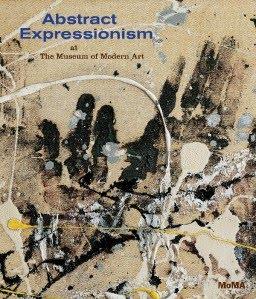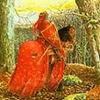Inauguro una nueva sección en la que iré poniendo aquellas exposiciones temporales que están teniendo lugar en algunos de los grandes museos del mundo.
El Prado (Madrid)
Chardin (1699-1779)
1 de marzo - 29 de mayo de 2011
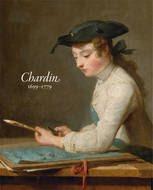 Tras las exposiciones dedicadas a Chardin con motivo del bicentenario de la muerte del artista y el tricentenario de su nacimiento, en 1979 y 1999, no se había vuelto a revisar la relativamente escasa producción -algo más de doscientas obras- de este admirado y original pintor. Con 57 obras, la muestra constituirá una oportunidad excepcional para dar a conocer su obra por primera vez en España. El recorrido de la exposición seguirá un orden cronológico atravesando los aspectos más destacados desde los inicios de la vida artística de Chardin, en la segunda década del siglo XVIII, hasta los pasteles de los años setenta. El visitante se encontrará con muchas de sus más famosas creaciones junto a cuadros poco conocidos por tratarse de obras albergadas en colecciones particulares e incluso algunas identificadas recientemente. Ademá s, en el Prado se podrán contemplar 16 obras que no se han incluido en la presentación italiana de la muestra, entre las que cabe destacar La raya, una de sus pinturas más importantes, procedente del Musée du Louvre; Los atributos de las artes, del Musé e Jacquemart-André de París, cuadro de grandes dimensiones de tema alegórico que se presta por primera vez a una exposición; o las tres versiones de la Joven maestra de escuela que se reúnen en primicia para su presentación en la sede española.
Tras las exposiciones dedicadas a Chardin con motivo del bicentenario de la muerte del artista y el tricentenario de su nacimiento, en 1979 y 1999, no se había vuelto a revisar la relativamente escasa producción -algo más de doscientas obras- de este admirado y original pintor. Con 57 obras, la muestra constituirá una oportunidad excepcional para dar a conocer su obra por primera vez en España. El recorrido de la exposición seguirá un orden cronológico atravesando los aspectos más destacados desde los inicios de la vida artística de Chardin, en la segunda década del siglo XVIII, hasta los pasteles de los años setenta. El visitante se encontrará con muchas de sus más famosas creaciones junto a cuadros poco conocidos por tratarse de obras albergadas en colecciones particulares e incluso algunas identificadas recientemente. Ademá s, en el Prado se podrán contemplar 16 obras que no se han incluido en la presentación italiana de la muestra, entre las que cabe destacar La raya, una de sus pinturas más importantes, procedente del Musée du Louvre; Los atributos de las artes, del Musé e Jacquemart-André de París, cuadro de grandes dimensiones de tema alegórico que se presta por primera vez a una exposición; o las tres versiones de la Joven maestra de escuela que se reúnen en primicia para su presentación en la sede española.Thyssen-Bornemisza (Madrid)
Jean–Léon Gérôme (1824-1904)
15 de febrero - 22 de mayo de 2011
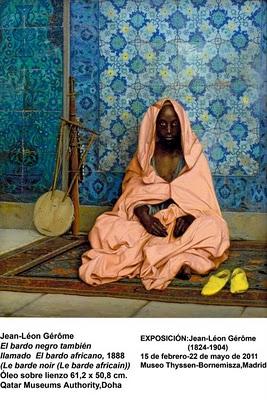 La exposición Jean-Léon Gérôme (1824-1904) es resultado de un ambicioso proyecto conjunto en tre el J. Paul Getty Museum, el Musée d’Orsay y el Museo Thyssen-Bornemisza y que supone la primera gran exposición monográfica dedicada al pintor y escultor francés desde la celebrada hace treinta años en Estados Unidos, fundamentándose en los estudios en profundidad y catalogaciones que sobre la obra del artista ha venido realizando la historiografía más reciente. En la primavera de 2011 recalará en Madrid una versión reducida de la gran retrospectiva presentada en Los Ángeles y París a lo largo de 2010, pudi éndose contemplar una selección de 55 piezas entre sus obras más emblemáticas. Los óleos y esculturas que se presentan nos permiten conocer todos los puntos claves de este creador de imágenes y así profundizar en su concepción teatralizada de la pintura de historia, en el realismo y el gusto por el detalle de sus trabajos de tema oriental, así como del uso de la policromía en su producción escultórica.
La exposición Jean-Léon Gérôme (1824-1904) es resultado de un ambicioso proyecto conjunto en tre el J. Paul Getty Museum, el Musée d’Orsay y el Museo Thyssen-Bornemisza y que supone la primera gran exposición monográfica dedicada al pintor y escultor francés desde la celebrada hace treinta años en Estados Unidos, fundamentándose en los estudios en profundidad y catalogaciones que sobre la obra del artista ha venido realizando la historiografía más reciente. En la primavera de 2011 recalará en Madrid una versión reducida de la gran retrospectiva presentada en Los Ángeles y París a lo largo de 2010, pudi éndose contemplar una selección de 55 piezas entre sus obras más emblemáticas. Los óleos y esculturas que se presentan nos permiten conocer todos los puntos claves de este creador de imágenes y así profundizar en su concepción teatralizada de la pintura de historia, en el realismo y el gusto por el detalle de sus trabajos de tema oriental, así como del uso de la policromía en su producción escultórica.Guggenheim (Bilbao)
Caos y clasicismo: arte en Francia, Italia, Alemania y España, 1918-1936
22 de febrero - 15 de mayo del 2011
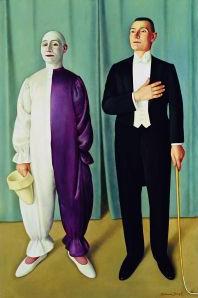 Caos y clasicismo: arte en Francia, Italia, Alemania y España, 1918-1936 realiza un recorrido por este período de entreguerras, desde la idea mítica y poética de la vanguardia pari sina hasta el concepto político e histórico de un renovado Imperio Romano imaginado por Benito Mussolini; hasta la elevada modernidad neoplatónica de la Bauhaus; y, finalmente, hasta la escalofriante estética de la naciente cultura nazi. La exposición relaciona los principales movimientos que proclamaron la claridad visual y temática, el Purismo, el Novecento italiano y la Neue Sachlichkeit (Nueva Objetividad) a través de diferentes temas muy singulares y vinculados entre sí. La presentación en el Museo Guggenheim Bilbao incorpora importa ntes ejemplos del arte español que adoptó esta vuelta al clasicismo. Pese a que España permaneció neutral durante la Primera Guerra Mundial, no fue ajena a los cambios políticos que el conflicto bélico acarreó. En 1931 se produjo la caída de la monarquía española y cinco años más tarde estallaría la Guerra Civil. Esta gran transformación de la estética de entreguerras en la Europa occidental llegó a la pintura, la escultura, la fotografía, el cine, la moda y las artes decorativas, por lo que la muestra presenta obras de Balthus, Giorgio de Chirico, Jean Cocteau, Otto Dix, Pablo Gargallo, Hannah Höch, Fernand Léger, Henri Matisse, Ludwig Mies van der Rohe, Pablo Picasso o August Sander.
Caos y clasicismo: arte en Francia, Italia, Alemania y España, 1918-1936 realiza un recorrido por este período de entreguerras, desde la idea mítica y poética de la vanguardia pari sina hasta el concepto político e histórico de un renovado Imperio Romano imaginado por Benito Mussolini; hasta la elevada modernidad neoplatónica de la Bauhaus; y, finalmente, hasta la escalofriante estética de la naciente cultura nazi. La exposición relaciona los principales movimientos que proclamaron la claridad visual y temática, el Purismo, el Novecento italiano y la Neue Sachlichkeit (Nueva Objetividad) a través de diferentes temas muy singulares y vinculados entre sí. La presentación en el Museo Guggenheim Bilbao incorpora importa ntes ejemplos del arte español que adoptó esta vuelta al clasicismo. Pese a que España permaneció neutral durante la Primera Guerra Mundial, no fue ajena a los cambios políticos que el conflicto bélico acarreó. En 1931 se produjo la caída de la monarquía española y cinco años más tarde estallaría la Guerra Civil. Esta gran transformación de la estética de entreguerras en la Europa occidental llegó a la pintura, la escultura, la fotografía, el cine, la moda y las artes decorativas, por lo que la muestra presenta obras de Balthus, Giorgio de Chirico, Jean Cocteau, Otto Dix, Pablo Gargallo, Hannah Höch, Fernand Léger, Henri Matisse, Ludwig Mies van der Rohe, Pablo Picasso o August Sander.Grand Palais (París)
Odilon Redon: Prince du Rêve
23 de marzo – 20 de junio del 2011
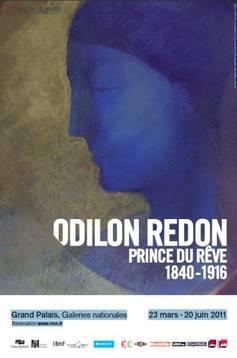 Contemporain des impressionnistes (il participera en 1886 à la dernière exposition du groupe), Odilon Redon (1840-1916) demeure comme le grand artiste du mystère et du subconscient en une époque qui était surtout éprise de réel et d’objectivité. L’un des principaux acteurs de l’art au tournant des XIXe et XXe siècles, il a joué un rôle essentiel dans la genèse du symbolisme, notamment par ses fusains et ses lithographies (les célèbres Noirs) avant d’être admiré pour ses pastels et ses tableaux par les jeunes peintres de la couleur, Nabis et Fauves. Il sera ensuite considéré comme l’un des précurseurs du surréalisme. L’exposition des Galeries nationales représente une véritable redécouverte de cet artiste. Quelques grandes monographies lui ont été récemment consacrées à l’étranger, mais cette rétrospective est la première organisée à Paris depuis celle de l’Orangerie en 1956. Elle repose sur l’étude de nombreux documents inédits qui permettent d’éclairer l’œuvre de Redon d’une lumière nouvelle, et notamment sur l’exploitation systématique de son livre de raison, dans lequel l’artiste a consigné le titre et la date de ses œuvres.
Contemporain des impressionnistes (il participera en 1886 à la dernière exposition du groupe), Odilon Redon (1840-1916) demeure comme le grand artiste du mystère et du subconscient en une époque qui était surtout éprise de réel et d’objectivité. L’un des principaux acteurs de l’art au tournant des XIXe et XXe siècles, il a joué un rôle essentiel dans la genèse du symbolisme, notamment par ses fusains et ses lithographies (les célèbres Noirs) avant d’être admiré pour ses pastels et ses tableaux par les jeunes peintres de la couleur, Nabis et Fauves. Il sera ensuite considéré comme l’un des précurseurs du surréalisme. L’exposition des Galeries nationales représente une véritable redécouverte de cet artiste. Quelques grandes monographies lui ont été récemment consacrées à l’étranger, mais cette rétrospective est la première organisée à Paris depuis celle de l’Orangerie en 1956. Elle repose sur l’étude de nombreux documents inédits qui permettent d’éclairer l’œuvre de Redon d’une lumière nouvelle, et notamment sur l’exploitation systématique de son livre de raison, dans lequel l’artiste a consigné le titre et la date de ses œuvres. Grand Palais (París)
Nature et idéal: le paysage à Rome, 1600-1650. Carrache, Poussin, Le Lorrain…
9 de marzo – 6 de junio del 2011
 C’est à Rome, dans la première moitié du XVIIe siècle, que débute véritablement l’histoire de la peinture de paysage. Auparavant, la représentation de la nature n’existait pas en tant que genre autonome dans la peinture européenne et c’est dans la capitale de la chrétienté que va naître et se développer cette nouvelle catégorie picturale, appelée à connaître un essor considérable. Rome était depuis l’antiquité une destination convoitée par les artistes désireux d’y compléter leur formation mais à la fin du XVIe siècle, divers facteurs vont permettre l’éclosion de ce genre profane: la présence simultanée de peintres parfois spécialisés venus de multiples foyers a rtistiques, en particulier les Flandres; l’attrait de la Ville éternelle, renouvelé par les transformations récentes de son paysage urbain; un goût croissant pour le dessin sur le motif et son réemploi dans l’œuvre peinte en atelier; la circulation des images favorisée par l’estampe, et l’intérêt nouveau des théoriciens; l’existence de grandes collections de peintures des maîtres de la Renaissance; enfin, l’immense succès commercial du paysage peint auprès des amateurs, en particulier ceux de l’aristocratie et des familles pontificales.
C’est à Rome, dans la première moitié du XVIIe siècle, que débute véritablement l’histoire de la peinture de paysage. Auparavant, la représentation de la nature n’existait pas en tant que genre autonome dans la peinture européenne et c’est dans la capitale de la chrétienté que va naître et se développer cette nouvelle catégorie picturale, appelée à connaître un essor considérable. Rome était depuis l’antiquité une destination convoitée par les artistes désireux d’y compléter leur formation mais à la fin du XVIe siècle, divers facteurs vont permettre l’éclosion de ce genre profane: la présence simultanée de peintres parfois spécialisés venus de multiples foyers a rtistiques, en particulier les Flandres; l’attrait de la Ville éternelle, renouvelé par les transformations récentes de son paysage urbain; un goût croissant pour le dessin sur le motif et son réemploi dans l’œuvre peinte en atelier; la circulation des images favorisée par l’estampe, et l’intérêt nouveau des théoriciens; l’existence de grandes collections de peintures des maîtres de la Renaissance; enfin, l’immense succès commercial du paysage peint auprès des amateurs, en particulier ceux de l’aristocratie et des familles pontificales.Musée d'Orsay (París)
Une ballade d'amour et de mort: photographie préraphaélite en Grande Bretagne, 1848-1875
8 de marzo - 29 de mayo del 2011
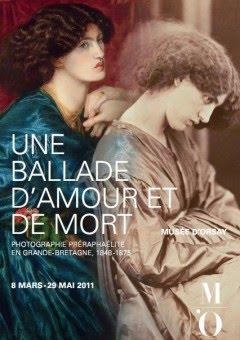 Dans l'Angleterre de la seconde moitié du XIXe siècle, en pleine époque victorienne, l'esthétique des peintres préraphaélites trouve de nombreux échos chez les photographes soucieux d'être reconnus en tant qu'artistes. Ceux-ci sont, comme les peintres, marqués par les écrits de John Ruskin, premier théoricien des préraphaélites. L'auteur y préconise un retour à la nature et à l'artisanat, se fait le défenseur d'une vision précise et exalte l'architecture médiévale à laquelle il attribue des hautes qualités morales menacées par l'industrialisation. Peintres préraphaélites et photographes victoriens se connaissent. Ils traitent les mêmes thèmes historiques, inspirés par Dante, Shakespeare, Byron ou Lord Tennyson, le "poète lauréat". Ils empruntent également à la vie moderne leurs sujets à tendance sociale et édifiante, si bien que s'établit une véritable communauté de vision entre bien des tableaux de John Everett Millais, Dante Gabriel Rossetti, Ford Maddox Brown et les épreuves de Julia Margaret Cameron, Roger Fenton, Lewis Carroll et Henry Peach Robinson. Un riche et fructueux dialogue s'instaure entre peintres et photographes, à la découverte duquel cette exposition nous invite.
Dans l'Angleterre de la seconde moitié du XIXe siècle, en pleine époque victorienne, l'esthétique des peintres préraphaélites trouve de nombreux échos chez les photographes soucieux d'être reconnus en tant qu'artistes. Ceux-ci sont, comme les peintres, marqués par les écrits de John Ruskin, premier théoricien des préraphaélites. L'auteur y préconise un retour à la nature et à l'artisanat, se fait le défenseur d'une vision précise et exalte l'architecture médiévale à laquelle il attribue des hautes qualités morales menacées par l'industrialisation. Peintres préraphaélites et photographes victoriens se connaissent. Ils traitent les mêmes thèmes historiques, inspirés par Dante, Shakespeare, Byron ou Lord Tennyson, le "poète lauréat". Ils empruntent également à la vie moderne leurs sujets à tendance sociale et édifiante, si bien que s'établit une véritable communauté de vision entre bien des tableaux de John Everett Millais, Dante Gabriel Rossetti, Ford Maddox Brown et les épreuves de Julia Margaret Cameron, Roger Fenton, Lewis Carroll et Henry Peach Robinson. Un riche et fructueux dialogue s'instaure entre peintres et photographes, à la découverte duquel cette exposition nous invite.National Gallery (Edimburgo)
French Drawings: Poussin to Seurat
5 de febrero − 1 de mayo del 2011
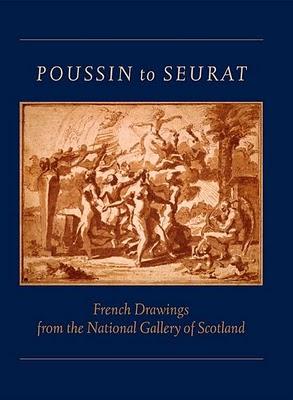 Over the last thirty years the National Gallery of Scotland has carefully and deliberately strengthened its excellent collection of French drawings in order to complement its holdings of French paintings. This outstanding exhibition of French drawings includes works by famous artists such as Poussin, Boucher, Ingres, Corot, Pissarro and Seurat, as well as important works by lesser-known masters such as Jeaurat, Lancrenon, Hesse, Dulac and Roguin. The subjects covered in this exhibition range from the courtly art of the sixteenth century to the more down-to-earth imagery of the Realists and Impressionists in the nineteenth century. There are preparatory drawings for tapestries and for ambitious Salon pictures, as well as figure studies made in the studio or landscape sketches inspired by study in the open air.
Over the last thirty years the National Gallery of Scotland has carefully and deliberately strengthened its excellent collection of French drawings in order to complement its holdings of French paintings. This outstanding exhibition of French drawings includes works by famous artists such as Poussin, Boucher, Ingres, Corot, Pissarro and Seurat, as well as important works by lesser-known masters such as Jeaurat, Lancrenon, Hesse, Dulac and Roguin. The subjects covered in this exhibition range from the courtly art of the sixteenth century to the more down-to-earth imagery of the Realists and Impressionists in the nineteenth century. There are preparatory drawings for tapestries and for ambitious Salon pictures, as well as figure studies made in the studio or landscape sketches inspired by study in the open air.Tate Britain (Londres)
Romantics
9 de agosto del 2010 – 31 de julio del 2011
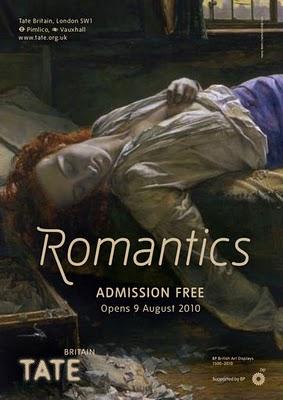 This summer, romance is in the air in the Clore Gallery. A major new nine-room display presents Romantic art in Britain, its origins, inspirations and legacies. Drawn from Tate's collection, it showcases major works by Henry Fuseli, JMW Turner, John Constable and Samuel Palmer, as well as newly-acquired works by William Blake. From Turner's reinvention of landscape to Blake's visionary histories, the display reveals the imagination and innovations of a generation defined by belief in creative freedom, rather than tradition or style. In addition, two rooms look at the legacy of The Romantics, presenting work by Graham Sutherland and others. Romantics, part of the BP British Art Displays, features over 170 key paintings, prints and photographs spread over nine thematic rooms exploring the origins, inspirations and legacies of British Romantic art.
This summer, romance is in the air in the Clore Gallery. A major new nine-room display presents Romantic art in Britain, its origins, inspirations and legacies. Drawn from Tate's collection, it showcases major works by Henry Fuseli, JMW Turner, John Constable and Samuel Palmer, as well as newly-acquired works by William Blake. From Turner's reinvention of landscape to Blake's visionary histories, the display reveals the imagination and innovations of a generation defined by belief in creative freedom, rather than tradition or style. In addition, two rooms look at the legacy of The Romantics, presenting work by Graham Sutherland and others. Romantics, part of the BP British Art Displays, features over 170 key paintings, prints and photographs spread over nine thematic rooms exploring the origins, inspirations and legacies of British Romantic art. National Gallery (Londres)
Jan Gossaert's Renaissance 23 de febrero – 30 de mayo del 2011
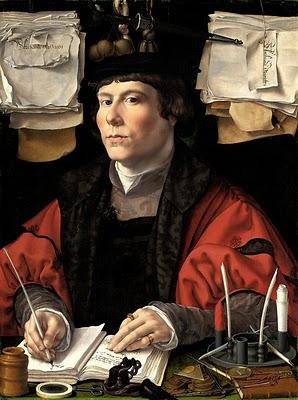 Jan Gossaert, a native of Flanders (active 1503; died 1532), was one of the most startling and accomplished artists of the Northern Renaissance. "Jan Gossaert’s Renaissance" is the first exhibition dedicated to the artist for over 40 years, and presents the results of a complete re-examination of his work, including new technical discoveries. The exhibition features over 80 works, including many of the artist’s most important paintings, including the ‘Virgin and Child’ and ‘Hercules and Deianeira’. It also features drawings and contemporaneous sculptures of the Northern Renaissance. The National Gallery has one of the largest and finest collections of Gossaert’s paintings in the world –a highlight being The Adoration of the Kings (1515). This exhibition allows them to be set in the context of the full range of the artist’s work, from the fruits of his early visit to Rome to the unusually erotic presentation of the nude in his Adam and Eve series.
Jan Gossaert, a native of Flanders (active 1503; died 1532), was one of the most startling and accomplished artists of the Northern Renaissance. "Jan Gossaert’s Renaissance" is the first exhibition dedicated to the artist for over 40 years, and presents the results of a complete re-examination of his work, including new technical discoveries. The exhibition features over 80 works, including many of the artist’s most important paintings, including the ‘Virgin and Child’ and ‘Hercules and Deianeira’. It also features drawings and contemporaneous sculptures of the Northern Renaissance. The National Gallery has one of the largest and finest collections of Gossaert’s paintings in the world –a highlight being The Adoration of the Kings (1515). This exhibition allows them to be set in the context of the full range of the artist’s work, from the fruits of his early visit to Rome to the unusually erotic presentation of the nude in his Adam and Eve series.British Museum (Londres)
Picasso to Julie Mehretu. Modern drawings from the British Museum collection
7 de octubre del 2010 – 25 de abril del 2011
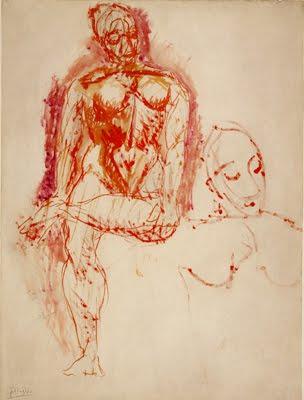
Wallace Collection (Londres)
Esprit et Vérité: Watteau and His Circle
12 de marzo - 5 de junio del 2011

Reiss-Engelhorn Museen (Mannheim)
The Return of the Gods. Berlin's Hidden Olympus
13 de junio del 2010 - 13 de junio del 2011
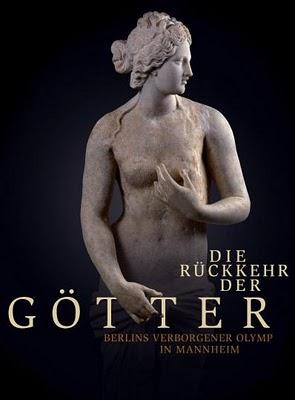
Alte Pinakothek (Munich)
Vermeer in Munich
17 de marzo - 19 de junio del 2011
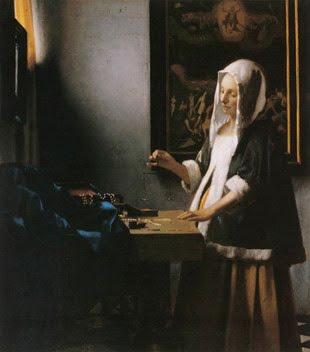
Museum of Modern Art (Nueva York)
Abstract Expressionist New York
3 de octubre del 2010 - 25 de abril del 2011
